Unit 4 explores transoceanic interconnections from 1450 to 1750, focusing on maritime exploration, cultural exchanges, and global trade networks that reshaped the world during this transformative era.
Overview of the Time Period: 1450-1750
This period, spanning 300 years, witnessed profound global transformations. It marked the rise of maritime exploration, the Columbian Exchange, and the Atlantic Slave Trade, reshaping economies and cultures worldwide. The linking of the Americas, Europe, Africa, and Asia created a truly globalized world, fostering trade and cultural exchanges. Empires like the Ottomans and Ming rose to prominence, while others declined. Technological advancements in navigation and warfare drove these changes, enabling European dominance in global trade. This era laid the foundation for modern global interconnections, impacting demographics, economies, and societies in lasting ways.
Significance of Transoceanic Interconnections
Transoceanic interconnections during 1450-1750 were pivotal in shaping global history. They facilitated the exchange of goods, ideas, and cultures across vast distances, creating a interconnected world. Maritime trade networks, such as the triangular trade, linked Europe, Africa, and the Americas, driving economic growth and cultural diffusion. The Columbian Exchange introduced new plants, animals, and diseases, altering ecosystems and populations. These connections also spurred technological advancements in navigation and warfare, enabling European exploration and empire-building. The social and economic impacts were profound, reshaping identities and societies while laying the groundwork for modern globalization and its complexities.
Technological Innovations
Advances in maritime technologies, such as the astrolabe and compass, enabled exploration and trade. Firearms revolutionized warfare, while cultural exchanges accelerated the diffusion of these innovations globally.
Maritime Technologies: Ships and Navigation
Maritime technologies during 1450-1750 revolutionized global exploration and trade. The astrolabe and compass enabled precise navigation, while the development of carracks and galleons allowed for longer voyages. These innovations facilitated the Age of Exploration, connecting distant regions and fostering cultural exchanges. Improved ship designs, such as the fluyt, enhanced cargo capacity, boosting trade efficiency. Navigation tools like the sextant further refined maritime accuracy. Such technological advancements were crucial in establishing transoceanic trade networks, linking Europe, Asia, Africa, and the Americas. These developments not only expanded empires but also laid the foundation for a globalized economy.
Firearms and Military Technology
Firearms and military technology played a pivotal role in shaping global power dynamics from 1450 to 1750. The diffusion of gunpowder from Asia to Europe revolutionized warfare, with firearms becoming central to military strategies. Matchlock muskets and cannons enabled European empires to dominate conflicts, while fortifications evolved to counter these new weapons. The widespread adoption of firearms transformed battle tactics, emphasizing ranged combat over traditional methods. This technological shift not only influenced military outcomes but also reshaped political and social structures, as states invested heavily in modernizing their armies. The global spread of firearms underscored the interconnected nature of military innovation during this period.
Diffusion of Technology Across Cultures
The diffusion of technology across cultures during 1450-1750 was a cornerstone of global transformation. The exchange of technologies like gunpowder, navigation tools, and agricultural practices reshaped societies worldwide. For instance, gunpowder spread from Asia to Europe, revolutionizing warfare, while European maritime innovations reached Asia and Africa. The Columbian Exchange facilitated the transfer of crops and livestock, altering economies and diets. Cultural interactions, driven by trade and exploration, enabled the sharing of knowledge, such as Islamic astronomical advancements influencing European navigation. This cross-cultural exchange not only enhanced technological progress but also fostered global interconnectedness, leaving a lasting legacy on societies and their development.
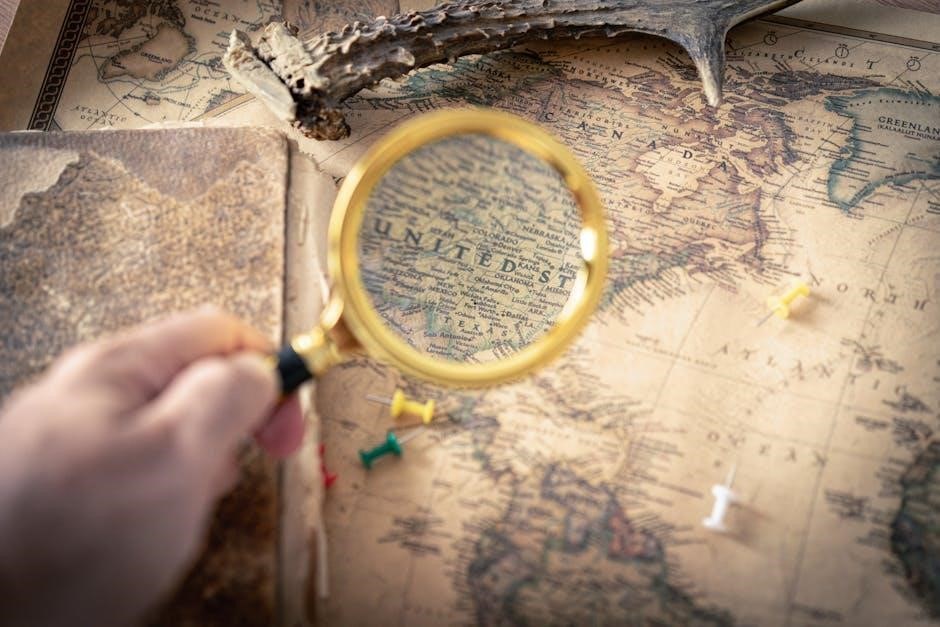
Maritime Exploration and Trade
Maritime exploration and trade from 1450-1750 reshaped global connections, driven by European nations seeking wealth, new routes, and cultural exchange, while advancing navigation and economic networks.
European Exploration: Motivations and Key Players
European exploration from 1450-1750 was driven by desires for wealth, religious spread, and scientific curiosity. Portugal and Spain led the charge, with figures like Columbus and Vasco da Gama pioneering new maritime routes. Monarchs such as Ferdinand and Isabella financed voyages to gain resources and expand influence. The quest for spices, gold, and new trade routes fueled competition among European powers, shaping global connections and sparking cultural exchanges. These explorers and their sponsors laid the foundation for colonial empires, reshaping the world’s political and economic landscapes.
The Role of Asian and African Maritime Networks
Asian and African maritime networks played a crucial role in global trade before and during European exploration. The Ming dynasty’s treasure fleets and established trade routes connected Asia with Africa and the Middle East. African kingdoms, such as those along the Swahili Coast, facilitated trade in gold, ivory, and spices. These networks exchanged goods, ideas, and cultures, laying the groundwork for later European exploration. The Indian Ocean trade system, dominated by Arab and Asian merchants, was a cornerstone of global commerce. These existing networks influenced European explorers and shaped the integration of new trade routes into the global economy during this period.

Impact of Exploration on Indigenous Populations
European exploration had devastating effects on indigenous populations worldwide. The introduction of European diseases, to which native populations had no immunity, led to significant population decline. Enslavement, forced labor, and violence disrupted societies, while the loss of land and resources undermined traditional ways of life. Cultural practices and identities were eroded due to imposed European norms and religions. However, indigenous groups also resisted colonization, adapting strategies to survive and maintain their autonomy. The long-term consequences of exploration reshaped the demographic, cultural, and economic landscapes of the Americas, Africa, and other regions, leaving lasting legacies of inequality and resilience.
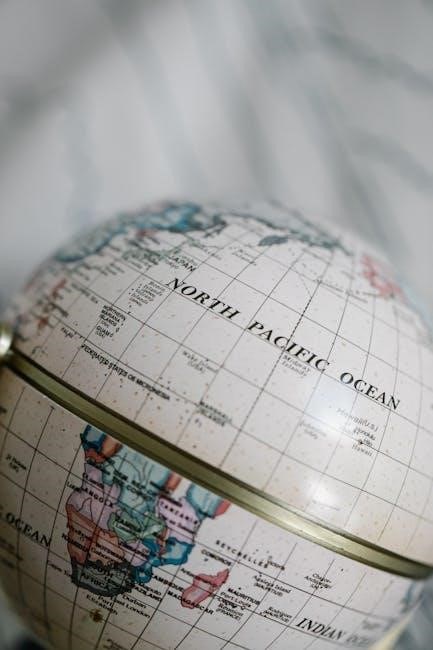
The Columbian Exchange
The Columbian Exchange was a widespread transfer of plants, animals, and diseases between the Americas and Afro-Eurasia, sparking profound demographic, economic, and cultural changes globally.
Exchange of Plants, Animals, and Diseases
The Columbian Exchange led to the transfer of plants, animals, and diseases between the Americas and Afro-Eurasia. Crops like maize, potatoes, and sweet potatoes transformed agriculture globally, while horses, pigs, and cattle were introduced to the Americas. However, the exchange also brought devastating diseases such as smallpox and measles, which decimated indigenous populations lacking immunity. This biological exchange had profound demographic and economic impacts, reshaping societies and ecosystems across the globe.
- Plants: Maize, potatoes, and sweet potatoes revolutionized agriculture worldwide.
- Animals: Horses and livestock transformed transportation and food systems in the Americas.
- Diseases: Smallpox and measles caused significant population decline among indigenous peoples.
Cultural and Demographic Impacts
The Columbian Exchange triggered profound cultural and demographic changes. Indigenous populations faced devastating population declines due to diseases like smallpox, to which they had no immunity. This led to social and political upheaval, as traditional structures were disrupted. Meanwhile, European cultures blended with those of the Americas, creating new traditions and identities. The introduction of African populations through the slave trade further diversified cultural landscapes. These interactions reshaped societies, fostering both cooperation and conflict, and laid the foundation for the modern globalized world.
- Cultural blending between European, African, and indigenous traditions emerged.
- Population declines among indigenous peoples reshaped demographics.
- New social and cultural identities began to form.
Economic Consequences of the Columbian Exchange
The Columbian Exchange had far-reaching economic impacts, reshaping global trade and production. The introduction of crops like maize, potatoes, and cassava to Europe and Asia increased food production, supporting population growth. In the Americas, European livestock and farming techniques transformed local economies. The exchange of precious metals, such as gold and silver, enriched European economies, fueling mercantilism and global trade. However, indigenous populations suffered economically due to labor exploitation and the disruption of traditional trade networks. This exchange laid the groundwork for the development of a global economy, connecting the Americas, Europe, Africa, and Asia in unprecedented ways.
- New crops boosted agricultural productivity worldwide.
- European economies grew from the influx of precious metals.
- Indigenous economies were disrupted by exploitation.
The Atlantic Slave Trade
The Atlantic Slave Trade (15th–19th centuries) forcibly moved millions of Africans to the Americas, shaping global economies, societies, and cultures through coerced labor and exploitation.
Causes and Structure of the Slave Trade
The Atlantic Slave Trade emerged due to European demand for labor in the Americas, driven by the Columbian Exchange and the need for workforce in plantations. The triangular trade system linked Europe, Africa, and the Americas, exchanging guns, cloth, and alcohol for enslaved Africans. African kingdoms and European colonizers collaborated, with Africans capturing and selling people to Europeans. The Middle Passage transported millions under brutal conditions. This system fueled economic growth in Europe and the Americas but devastated African societies, causing depopulation, political instability, and long-term social and economic scars. The trade’s structure was deeply rooted in racism and economic exploitation.
The Triangular Trade System
The triangular trade system connected Europe, Africa, and the Americas, facilitating the exchange of goods and enslaved people. European ships transported guns, cloth, and alcohol to Africa, where they were traded for enslaved Africans. These captives were forcibly taken to the Americas, with millions enduring the brutal Middle Passage. In return, American colonies exported raw materials like sugar, tobacco, and cotton to Europe. This system fueled economic growth in Europe and the Americas while devastating African societies. The triangular trade was central to the Atlantic Slave Trade, creating a cycle of exploitation that shaped global economies and societies for centuries.
Social and Economic Impacts on Africa and the Americas
The transatlantic slave trade profoundly impacted Africa and the Americas. In Africa, the loss of millions of people disrupted societies, weakened economies, and led to political instability. Many kingdoms faced depopulation, internal conflicts, and dependence on European goods. In the Americas, enslaved Africans were forced into labor on plantations, fueling economic growth in colonies. This system created racial hierarchies and long-term social inequalities. The Americas experienced a labor shortage addressed by the slave trade, while Africa suffered cultural and demographic losses. These interconnected changes reshaped societies on both continents, leaving lasting legacies in global racial and economic structures.

State-Building and Empire Expansion
European states like Portugal and Spain supported maritime exploration, leading to empire expansion. The Ottoman and Ming empires also grew, shaping global power dynamics and cultural exchanges.
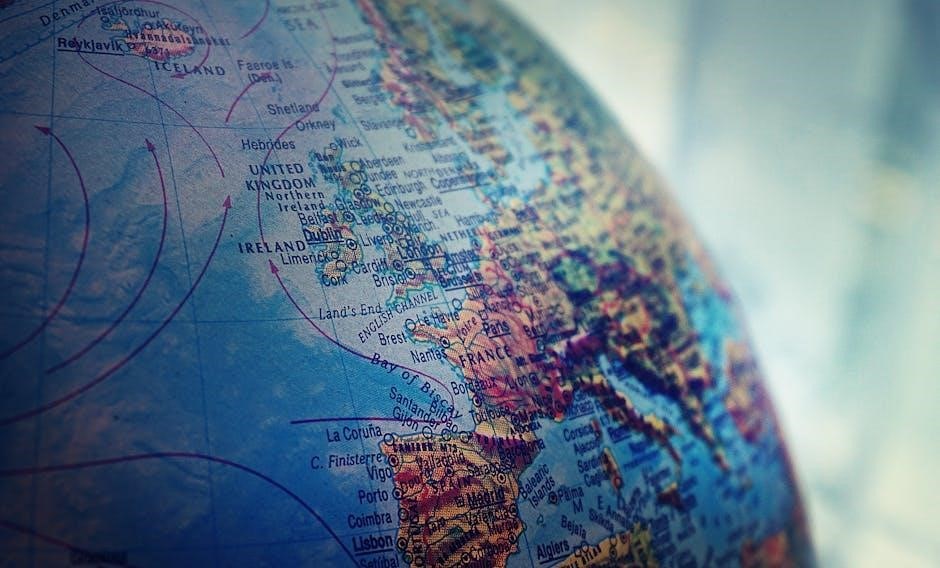
Role of States in Maritime Exploration
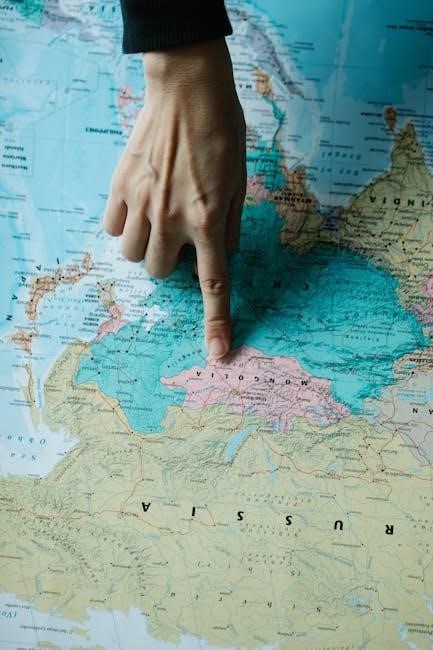
States played a crucial role in maritime exploration by sponsoring voyages and establishing trade routes. European monarchies, such as Portugal and Spain, invested in naval technology and funded explorers like Columbus and Vasco da Gama. These efforts aimed to expand territorial control, secure resources, and spread Christianity. Similarly, Asian empires, including China and the Ottomans, supported maritime endeavors to strengthen their influence. State-backed exploration led to the discovery of new trade routes, fostering economic growth and cultural exchange. This period marked the beginning of European dominance in global trade and the rise of colonial empires, reshaping the world’s political and economic landscape.
Rise of Empires: Ottoman, Ming, and Others
The Ottoman Empire expanded significantly, dominating the Mediterranean and connecting Europe with Asia. The Ming Dynasty in China revitalized its economy and culture, sponsoring maritime expeditions like Zheng He’s voyages. Other empires, such as the Mughal in India and the Safavid in Persia, also rose to prominence. These empires centralized power, developed administrative systems, and promoted cultural achievements. Their rise facilitated trade, cultural exchange, and the spread of ideas across vast regions. However, their expansion also led to conflicts over resources and territories, shaping the global balance of power during this transformative period.
Economic Systems and Global Trade
Unit 4 examines mercantilism, global trade networks, and the economic impact of exploration, highlighting how European nations and other regions interconnected through commerce and resource exchange.
Mercantilism and Its Impact on Global Trade
Mercantilism, a dominant economic theory in Unit 4, emphasized state wealth through exports and colonial resources. European nations like Spain, Portugal, and England sought to maximize exports and minimize imports, fostering global trade networks. This system led to the establishment of colonies, extraction of raw materials, and the accumulation of precious metals. Mercantilist policies also spurred competition among nations, driving advancements in maritime technology and trade routes. However, it often exploited colonies, leading to economic imbalances and social tensions. Understanding mercantilism is crucial for analyzing the economic motivations behind exploration and the interconnectedness of global trade during this period.
Development of Global Trade Networks
The period from 1450 to 1750 saw the establishment of robust global trade networks, linking Europe, Asia, Africa, and the Americas. European explorers forged new maritime routes, while existing networks like the Silk Road and Indian Ocean trade expanded. The Columbian Exchange introduced plants, animals, and diseases across hemispheres, reshaping economies and societies. The Triangular Trade System connected Europe, Africa, and the Americas, facilitating the exchange of goods like sugar, tobacco, and enslaved people. These networks fostered cultural and economic interdependence but also led to exploitation and inequality, profoundly impacting global history and shaping the modern world economy.
Cultural Exchanges and Their Effects
Cultural exchanges during 1450-1750 fostered the spread of religions, ideas, and practices across global networks, leading to syncretic cultures and lasting impacts on societal identities worldwide.
Religious and Cultural Diffusion
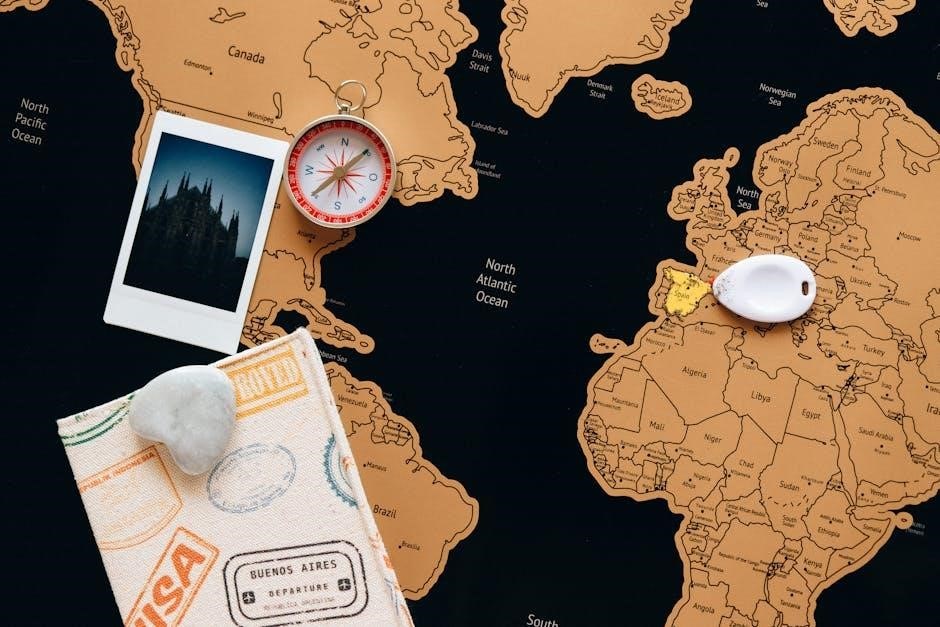
Religious and cultural diffusion flourished during the 1450-1750 period, driven by global trade and exploration. Christianity spread through European colonization, while Islam expanded across Africa and Asia. Indigenous cultures blended with European practices, creating syncretic traditions. The exchange of ideas, languages, and customs enriched societies but also led to tensions. Trade networks, such as the Silk Road and maritime routes, facilitated the movement of religions like Buddhism and Hinduism. Missionaries played a key role in spreading faiths, while local populations adapted external influences to their own contexts. This cultural exchange shaped identities and laid the groundwork for modern multicultural societies.

Impact on Identity and Society
The period of transoceanic interconnections profoundly shaped identities and societies. Cultural blending created new traditions, while social hierarchies often intensified due to colonial dominance. Indigenous populations faced challenges to their identities, resisting or adapting to external influences. The mixing of cultures led to the emergence of creole identities, particularly in the Americas. Power dynamics shifted, with European colonizers imposing their systems, often marginalizing local customs. These changes reshaped societal structures, fostering both cooperation and conflict. The legacy of this era continues to influence modern identities, highlighting the complex interplay of cultural exchange and power imbalances that defined this transformative period in world history.

Conclusion
Unit 4 highlights the transformative impact of transoceanic connections, shaping global trade, cultural exchanges, and societal structures, leaving a lasting legacy in the modern world.
Key Takeaways from Unit 4
Unit 4 emphasizes the profound impact of transoceanic interconnections between 1450 and 1750. Key themes include the Columbian Exchange, maritime exploration, and the Atlantic Slave Trade. The exchange of plants, animals, and diseases reshaped ecosystems and populations globally. European exploration, driven by economic and political motives, led to the rise of global trade networks. The triangular trade system and mercantilism dominated economic systems, while cultural and religious diffusion influenced identity and society. The legacy of this era includes the interconnectedness of the world, the rise of European empires, and the enduring effects of these interactions on modern societies. Understanding these connections is crucial for grasping global history.
Legacy of Transoceanic Interconnections
The legacy of transoceanic interconnections (1450-1750) is profound, shaping global dynamics for centuries. The Columbian Exchange revolutionized ecosystems, transferring plants, animals, and diseases across hemispheres. Maritime exploration and trade networks forged lasting economic and cultural ties between regions. The Atlantic Slave Trade had devastating demographic and social impacts on Africa and the Americas. European empires rose to dominance, while Asian and African networks adapted to new global realities. These interactions laid the foundation for modern globalization, blending cultures and creating interconnected economies. The era’s impact on identity, society, and power structures remains evident, influencing contemporary global relationships and cultural diversity.